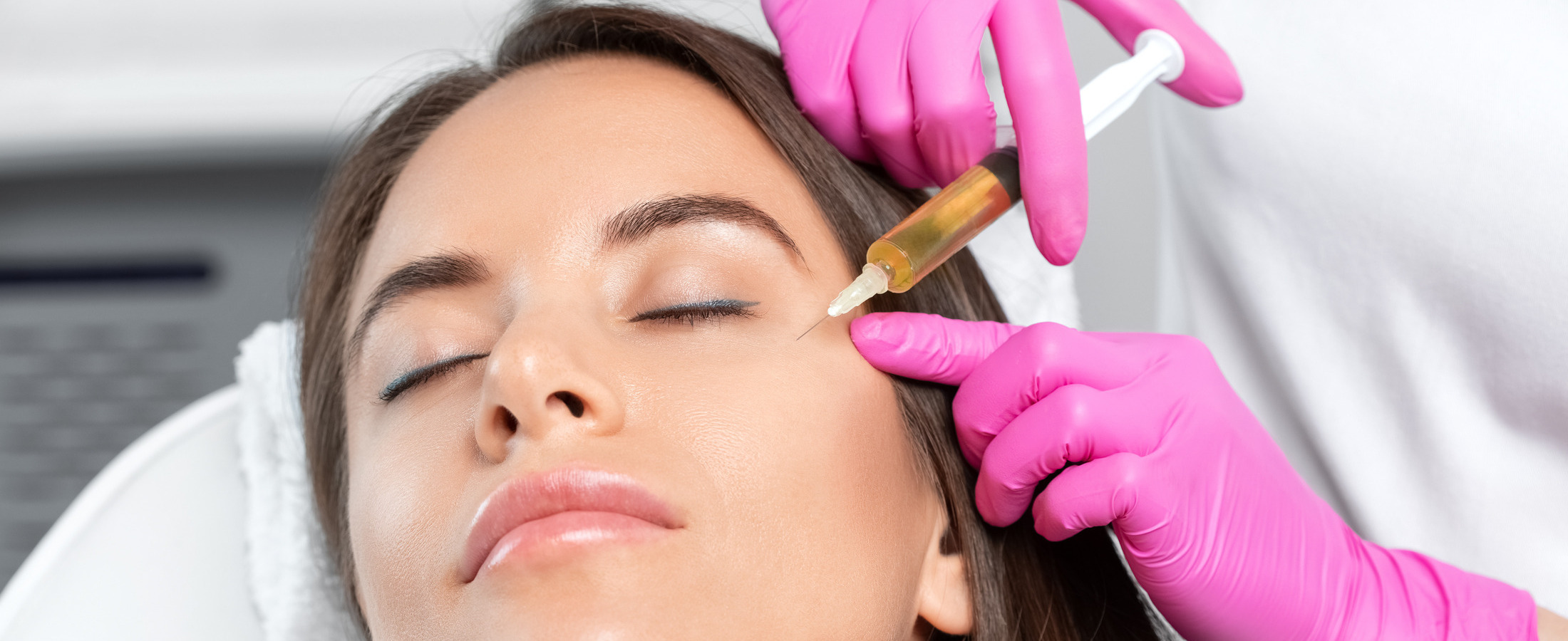Platelet Rich Plasma (PRP) is a treatment where a person’s own blood is used to help fight the visible signs of aging skin. Platelets contain a concentrated amount of growth factors, and these growth factors can help slow and even reverse some of the visible signs of aging by stimulating new collagen production. PRP can be injected and/or microneedled into the skin, which induces the body’s healing response. During this process, platelets release several enzymes and growth factors to promote renewal and healing.
Growth factors and their role in PRP therapy
A high concentration of platelets can contain multiple growth factor proteins that are beneficial for promoting tissue healing and regeneration. Here are some of the growth factors present in a PRP injection:
- Platelet-derived growth factor – encourages new cell growth and division
- Epidermal growth factor – stimulates different cell proliferation including the formation of fibroblasts
- Fibroblast growth factor – helps new skin cell growth and supports collagen production to minimize the appearance of wrinkles and other expression lines
- Insulin growth factor – stimulates cell growth and division
- Vascular endothelial growth factor – responsible for new blood vessel formation
- Keratinocyte growth factor – promotes the growth of new epithelial cells
Benefits of PRP treatment
Aesthetics:
- Reduces facial wrinkles and creases
- Tightens and plumps up sagging skin
- Improves skin tone and texture
- Restores under-eye depletion
- Builds collagen
Hair restoration:
- Stimulates hair follicles and rejuvenate hair growth
- Stops thinning hair
- Improves receding hairline
- Alleviates pattern baldness
Who is a good candidate for PRP Injection?
Although PRP is a safe and effective treatment, it may not be the best choice for individuals with the following conditions:
- Low platelet counts
- Chronic liver disease
- Active infection
- Weakened immune system
- Pregnant or breastfeeding
- Have an allergy to lidocaine and other compounds needed for platelet activation
How to prepare for a PRP treatment
- The day before your treatment, drink plenty of water, eat well, and get a good night’s rest.
- Discontinue blood thinning and anticoagulant medications or supplements for at least one week before the treatment.
- Discontinue the use of any corticosteroid injections or steroid medications at least 4 weeks before PRP injections.
- Do not consume alcohol 72 hours prior to PRP treatment.
- For a PRP facial treatment, do not wear makeup, lotions, or creams in the treated area.
What happens during a treatment?
A small sample of your blood is taken, placed into a sterilized tube, and spun in a centrifuge machine to isolate and separate platelets and plasma from red and white blood cells. The resulting number of platelets are now higher and more concentrated, which renders it platelet-rich plasma. These platelets are rich in growth factors that are necessary for wound healing, tissue repair, and cell regeneration. The PRP is then injected and/or microneedled into your skin.
Risks and side effects
A PRP injection is a low-risk procedure and does not usually cause major side effects. The procedure involves a blood draw, so you should make sure you are hydrated and have eaten beforehand to prevent feeling lightheaded. After the procedure, you may experience some soreness, swelling, and bruising at the injection site. Because PRP injections are made up of your own cells and plasma, the risk of an allergic reaction is much lower than with other injectable medications.
- Book Appointment (free consultations)
- Contact us by phone/text: 952-212-1268
- Follow us: Facebook and Instagram

